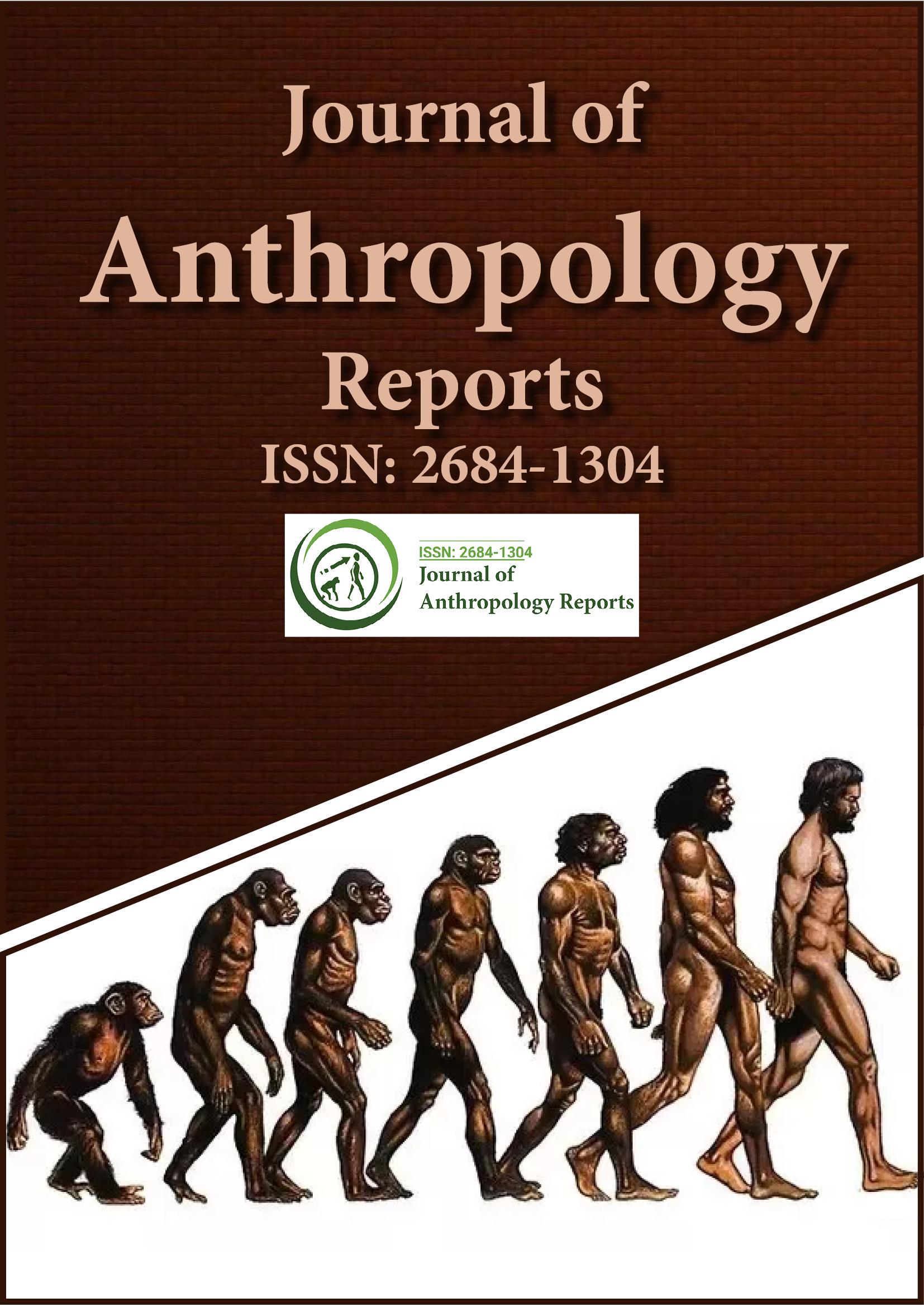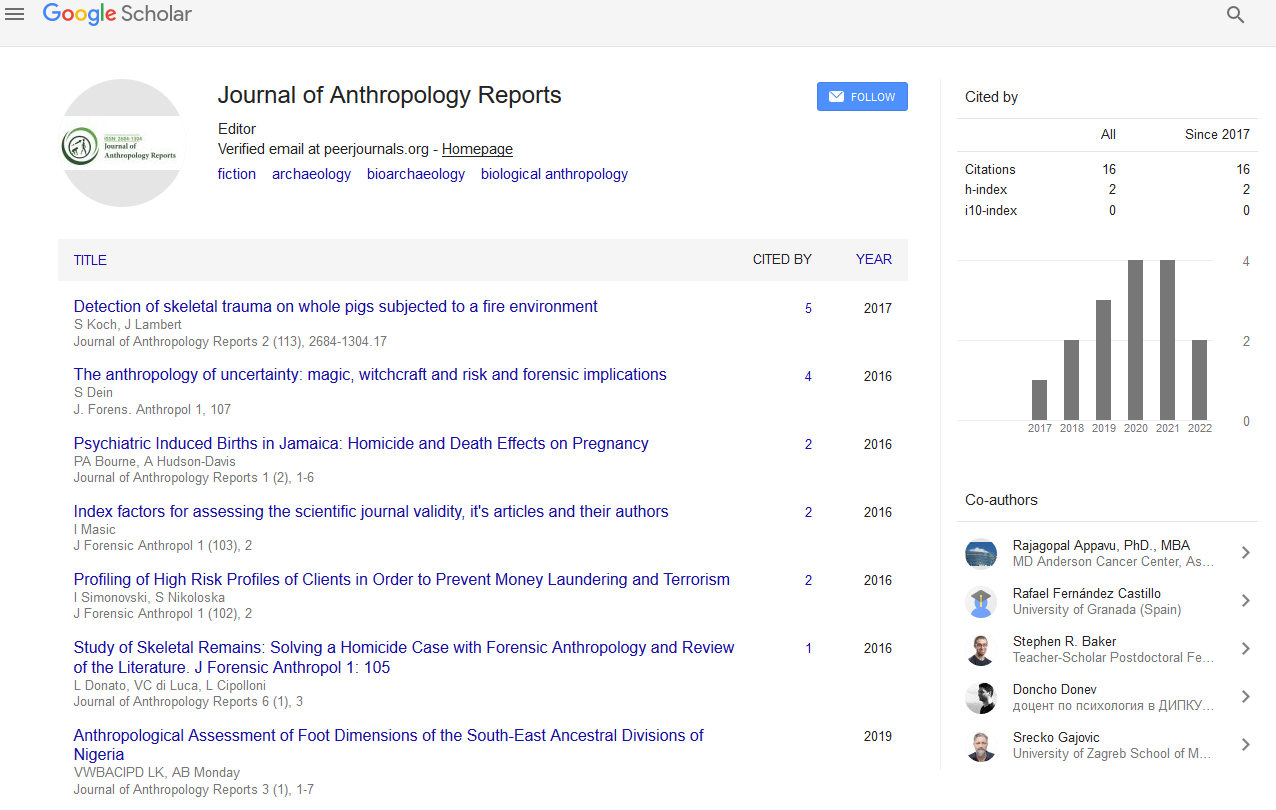Indexed In
- RefSeek
- Hamdard University
- EBSCO A-Z
Useful Links
Share This Page
Journal Flyer

Open Access Journals
- Agri and Aquaculture
- Biochemistry
- Bioinformatics & Systems Biology
- Business & Management
- Chemistry
- Clinical Sciences
- Engineering
- Food & Nutrition
- General Science
- Genetics & Molecular Biology
- Immunology & Microbiology
- Medical Sciences
- Neuroscience & Psychology
- Nursing & Health Care
- Pharmaceutical Sciences
Short Communication - (2022) Volume 5, Issue 2
Criminal Behavior: Psychosocial Perspectives
Received: 03-Mar-2022, Manuscript No. JFA-22-16013; Editor assigned: 07-Mar-2022, Pre QC No. JFA-22-16013(PQ); Reviewed: 22-Mar-2022, QC No. JFA-22-16013; Revised: 30-Mar-2022, Manuscript No. JFA-22-16013(R); Published: 05-Apr-2022, DOI: 10.35248/2684-1304.22.5.125
About the Study
Criminal behaviour pertains to any behaviour or act that violates the criminal law, whereas crime refers to the specific action that represents such behavior. Antisocial conduct is caused by peculiarities of the central and autonomic nervous systems, which interact with the environment, upbringing, and a variety of other contextual factors to enhance the likelihood of antisocial behavior [1]. A few studies have discovered the influence of these elements interacting; nevertheless, further study is needed in this field. Family, personality, locality, socioeconomic background, peers, and education have all been examined. Employing sociological characteristics such as the offender's criminal history, group support for illegal activity, connection between criminal and legitimate activities, and society's reaction, criminal behaviour may be divided into different kinds. (1) Violent personal crime, (2) occasional property crime, (3) occupational crime, (4) political crime, (5) public order crime, (6) conventional crime, (7) organized crime, and (8) professional crime are the different forms of crimes. Prostitution, gambling, and drugs and guns trafficking are all examples of organized crime [2].
Criminal behaviour requires the presence of an offender and a victim. Despite the evident requirement of this relationship, the perpetrator has always gotten the lion's share of attention from the public and the judicial system. Victims have traditionally been the realm of special interest organizations whose only purpose is to care for and protect crime victims, either in general or in the context of specific criminal victimization such as domestic abuse or sexual assault. This focus on offender traits has extended to academic inquiry, where the historical focus has been on understanding the conditions, motivations, and behavioral elements that contribute to the commission of a criminal act. Nevertheless, a more balanced examination of the two sides of the illegal conduct is becoming increasingly valuable. As a consequence, contemporary discussion has recognized the need of better understanding victims and their unique role in the criminal justice system. A number of models have been presented to explain the characteristics of both offenders and victims, as well as how these qualities impact the likelihood of committing and/or becoming a victim of a criminal act. The most current iteration of these typological models is the "seven-factor model of victim characteristics," which is the empirically validated culmination of numerous preceding victim typologies [4].
Criminal behaviour by the mentally ill, notably violence, has become a serious public concern in the Western world. The public has recognized the mentally ill as a key contributory element in the context of a growing crime rate. The focus of early studies in this field was on the rates of arrest in former mental patients. These were found to be somewhat higher than the overall population's, or only slightly higher for certain offences. When former mental hospital patients' arrest rates were compared to samples matched for demographic factors, however, the discrepancies vanished. For many years, a rather upbeat attitude of the link between mental illness and violent crime prevailed. It was thought that well-known causes linked to crime, such as poverty, familial criminality, bad parenting, school failure, and early hyperactivity and antisocial behaviour, were major factors that eclipsed any influence due to mental illness [4].
Numerous hypotheses have been proposed by criminologists as to why someone becomes a criminal. Biological hypotheses associating criminal conduct to intrinsic features have been offered since the eighteenth century; however these theories have been heavily contested by the scientific community. Scientists have discovered anomalies in the chromosomal structure of certain persons as a result of the advancement of contemporary genetics [5]. The XYY (supermale) chromosomal condition may work on the limbic system of the brain (which controls man's most primal desires, including his violent impulses) and assist trigger violent criminal acts. Physical, developmental, behavioral, and cognitive functions can all be affected by having an additional X or Y chromosome. Tall stature, absence of secondary pubertal growth, undersized testes (hypogonadism), delayed pubertal development, and breast development (gynecomastia) are all common physical characteristics in late puberty.
REFERENCES
- Christensen AM. Testing the Reliability of Frontal Sinuses in Positive Identification. J. Forensic Sci. 2005;50:18-22.
[CrossRef] [Google Scholar] [PubMed]
- Adams BJ. Establishing Personal Identification Based On Specific Patterns of Missing, Filled, and Unrestored Teeth. J. Forensic Sci. 2003;48:487-496.
[CrossRef] [Google Scholar] [PubMed]
- Stephan CN, Winburn AP, Christensen AF, Tyrrell AJ. Skeletal Identification By Radiographic Comparison: Blind Tests of A Morphoscopic Method Using Antemortem Chest Radiographs. J. Forensic Sci. 2011;56:320-332.
[CrossRef] [Google Scholar] [PubMed]
- Beatrice JS, Soler A. Skeletal Indicators of Stress: A Component of The Biocultural Profile of Undocumented Migrants In Southern Arizona. J. Forensic Sci. 2016;61:1164-1172.
[CrossRef] [Google Scholar] [PubMed]
- Collins H. Studies of Expertise and Experience. Topoi. 2018;37:67-77.
[CrossRef] [Google Scholar] [PubMed]
Citation: Zhang L (2022) Criminal behavior: Psychosocial Perspectives. J Anthropology Rep. 5:125.
Copyright: © 2022 Zhang L. This is an open access article distributed under the terms of the Creative Commons Attribution License, which permits unrestricted use, distribution, and reproduction in any medium, provided the original author and source are credited.

